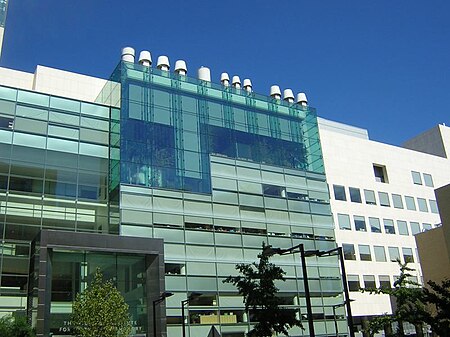MIT Department of Brain and Cognitive Sciences
Cognitive scienceCognitive science research institutesMassachusetts Institute of TechnologyNeuroscience research centers in the United StatesPsychology institutes ... and 2 more
Research institutes in MassachusettsScientific organization stubs

The Department of Brain and Cognitive Sciences at the Massachusetts Institute of Technology, Cambridge, Massachusetts, United States, engages in fundamental research in the areas of brain and neural systems, and cognitive processes. The department is within the School of Science at the MIT and began initially as the Department of Psychology founded by the psychologist Hans-Lukas Teuber in 1964. In 1986 the MIT Department of Psychology merged with the Whittaker College integrating Psychology and Neuroscience research to form the Department of Brain and Cognitive Sciences.
Excerpt from the Wikipedia article MIT Department of Brain and Cognitive Sciences (License: CC BY-SA 3.0, Authors, Images).MIT Department of Brain and Cognitive Sciences
Vassar Street, Cambridge Cambridgeport
Geographical coordinates (GPS) Address External links Nearby Places Show on map
Geographical coordinates (GPS)
| Latitude | Longitude |
|---|---|
| N 42.362337 ° | E -71.091753 ° |
Address
Brain and Cognitive Sciences (46) (Building 46)
Vassar Street 43
02139 Cambridge, Cambridgeport
Massachusetts, United States
Open on Google Maps







